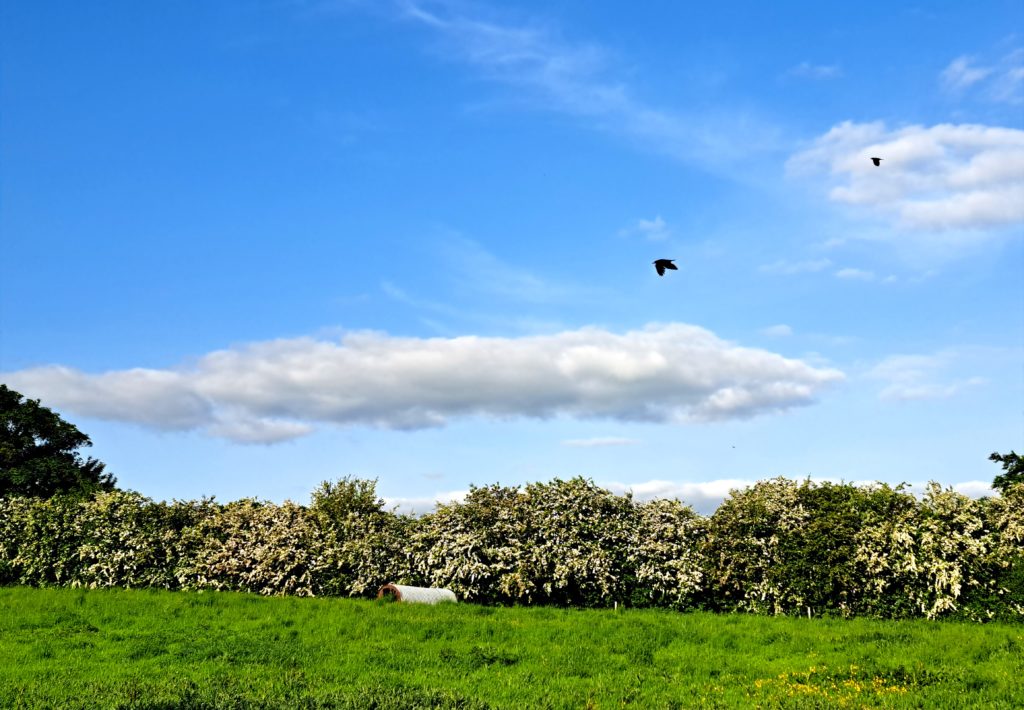
Good news! The Nature Restoration Law (NRL) won’t, can’t and couldn’t cause the abandonment of 10% of Europe’s perfectly good farmland. This is important to know in advance of Thursday 15th’s vote in the Environment (ENVI) Committee in the European Parliament, where the margins are reportedly very tight. Every one of the 88 MEP votes counts: if this committee doesn’t pass the compromise NRL text the whole thing is very likely to collapse. So if you are contacting MEPs on the ENVI Committee – or if indeed you are one of those 88 MEPs – rest assured. These is no land abandonment in the NRL. Oliver Moore gives you all the details you need. (Updated info on ecoscheles at 10.28 CET on 12/06/2023; and at 14.55 CET to add thread on Council position)
What 10%?
The Nature Restoration Law (NRL) as proposed by the European Commission contains no binding 10% target. 10% as a figure comes up just 4 times in a search of the entire document, and just once with regard to what is called, not abandonment, but, rather, “high diversity landscape features”.
What there is in this Commission proposal is an indicator reference in Article 9, and a monitoring tool in article 14. Of these only the latter even expressly mentions 10% high diversity landscape features.
So, unlike for example references to specific percentages of rewetting, progress towards having 10% high diversity landscape features will be checked, and then used in communications between member states and the Commission.
So while 10% makes sense because science tells us its the minimum level of biodiversity we need to start to reverse biodiversity decline, the Commission document itself does not give this 10% any teeth.
Evidence from how the Commission does indicators and monitoring in CAP means even these weak references will be essentially meaningless. Again and again, Commission feedback is ignored or replied to with a ‘sternly worded letter’ from the member state – and nothing else.
This happens across the board with CAP, for fairness, for ecology, and more. The most recent example we’ve seen comes from Denmark in this article we published last week, but the Observation Letters in general, from the Commission to member states, have been are a case study in political impotence.
So if this reference to 10% survives in the text as the process unfolds – which is very unlikely, see below – it may be used to check on progress and give non-binding feedback. That’s it.
What 10% – the One That’s Been Deleted or the One That’s Been Watered Down?
But wait – what was in the Commission text won’t survive. It can’t survive. Here’s why. The one reference (outside of a meaningless recital) in the main text to 10% high diversity landscape features has been deleted in the Parliament’s agreed compromise. Its literally gone! See article 14 in the image below – the proposed text on the left and the Parliament amendment on the right.
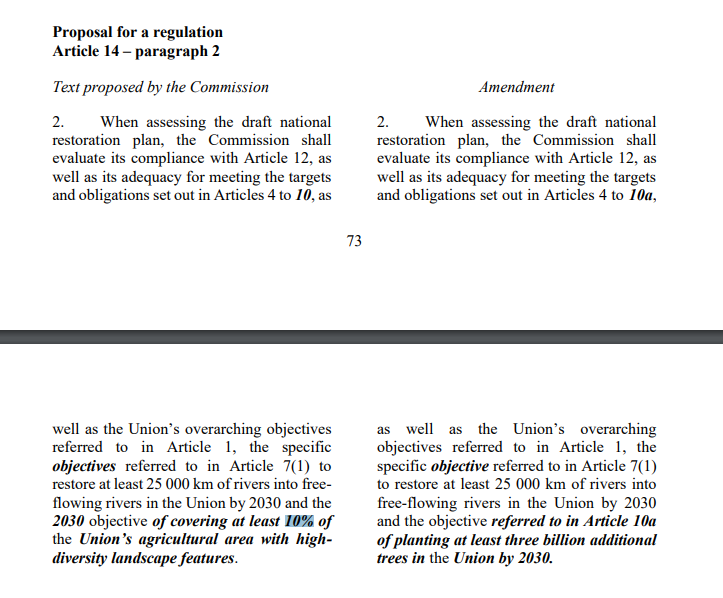
Here is a link to the actual document if you want to check for yourself:
Parliament’s agreed compromise text on NRL
This full text at the link above is precisely, specifically what is being voted on by the ENVI Committee of 88 MEPs on Thursday 15th. The Left, Greens, S&D and Renew groups came to this compromise text. This happened after the centre-right EPP group abandoned the political process, the process of making amendments to the Commission text, by walking out of the meeting where this was being worked on by all other groups (even the further right ECR and ID groups stayed in the meeting until the end).
The Council of Ministers – national ministers from the member states – has also developed a general position on the Commission text for the NRL. There is still one meeting on 20th June for the Council, where this NRL will be on the agenda. And, we can reveal here, the Council is also proposing to weaken this reference. The new Article 14, as proposed by the Council further emphasises just how non-binding article 14 is.
It states – “When assessing the draft national restoration plan, the Commission shall evaluate… (c) its contribution to the Union’s overarching objectives referred to in Article 1, the specific objectives referred to in Article 7(1) to restore at least 25 000 km of rivers into free-flowing rivers in the Union by 2030 and the 2030 objective of covering
at least 10% of the Union’s agricultural area with high-diversity landscape features.”
As you can see from the screen grab from the text below, this change is from ‘as well as’ to “its contribution to”. This, clearly, is designed to emphasis how the NRL simply plays a general, monitoring role. Adding a reference to “a contribution” gets everyone off the hook, as lots of legislation will make contributions, including but not limited to, the NRL. That’s why this has been added here.
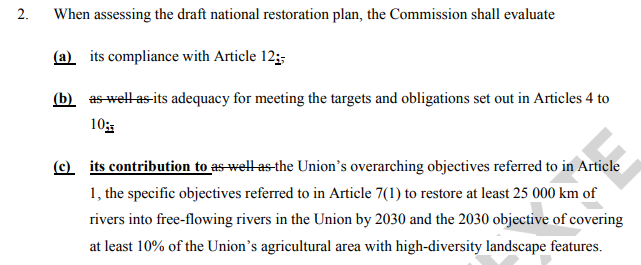
Here we can, in the interests of transparency, exclusively make available the Council of Ministers’ position on the NRL. You can see the above reference on page 87.
Download the Council of Ministers’ General Position on NRL
The Process
If the full compromise text the ENVI Committee has in front of it is passed by 45 or more MEPs, only then, realistically, can it will then go forward to a full vote in the Parliament – called plenary. Then the Parliament and the Council of Ministers will discuss and debate as co-legislators, and finally agree on a democratically approved NRL.
So _none_ of the texts you currently see are final, or agreed. All will be subject to change, towards a final Law being adopted and implemented. This has caused a lot of confusion, and has been used opportunistically, but it is simply the case that a final NRL is not completed yet.
Traditionally national ministers in the Council have been more environmentally conservative than the Parliament in policy formation in the EU, especially as the debate nears completion. Already, both institutions argue for a weaker reference to, or deletion of, 10%. And it was already non-binding. And only the Parliament and Council are co-legislators. Should this NRL pass the vote on Thursday and Plenary, then the Council and the Parliament – and only the Council and Parliament ,the Commission’s role is completed in real terms – will come up with with a final version of the Law.
So if your aim is to see the deletion of even this very indirect and meaningless reference to 10%, you can rely on the negotiations between the Parliament and Ministers – should they even get to happen – to sort this out for you.
That 10% Wasn’t Even 10% Anyway.
Not only is it non-binding, and/or weakened, and/or deleted, that 10% for high diversity landscape features was already partially covered by conditionality in CAP anyway. CAP’s basic and compulsory rules demand 4% of farms for biodiversity. This is already a requirement. GAEC 8 already requires farmers “to devote 4% of eligible land to biodiversity and landscape protection“.
So this idea that, suddenly, a whopping 10% of highly productive land must now be found – in times of war no less – to set aside and abandon to wilderness is a misleading, disingenuous fantasy.
To be clear: Farmers already do 4%. And more is beginning to happen on an voluntary basis. For example, there is now an option under CAP to also go for 7% via an eco-scheme in Ireland. Further, in Ireland, agricultural advisors claim 10% would be an easy reach for almost all farms anyway.
Nature Areas Now Allow Farming Anyway.
These “high diversity landscape features” are already having their meaning adjusted by the political process. They are being made into partial productivity areas – so they aren’t even ‘exclusively’ for nature anymore.
So if you are still concerned about the NRL and food security, and worried about any land anywhere being used for nature and not for your vision of productivity, don’t worry – the latest compromise text from the Parliament has completely altered the meaning of high diversity landscape features.
Its all in Annex IV – see image. See how the word ‘cannot’ is changed to ‘can’. It’s that clear. Here is a link to the actual official Parliament document if you want to check for yourself: nrl_ca_0706 (and its page 117 of 126)
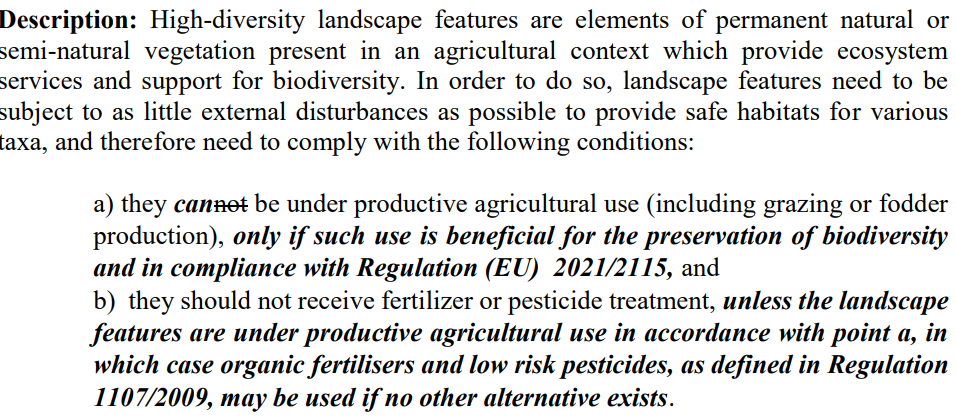
Remember these features are what are being called ‘abandoned land’ by various people intent on voting against the NRL in its totality.
However the agreed compromise text – the one being voted on on Thursday – expressly changes these areas, from for-nature, to for-nature-with-some-productivity.
As you can see above, the Parliament’s compromise text will allow for some fertilizers and some pesticides to be used in these areas now. Should this be adopted, this will become the official position of the Parliament in its negotiations with the Council of Ministers.
And guess what? The Council also now wants to see Annex IV changed too! The Council has added the following wording to its general position in advance of its meeting on 20th: “landscape features…cannot be under productive agriculture use unless such use is necessary for the preservation of biodiversity and they should not receive fertilizer or pesticide treatment except for low input treatment with solid manure“.
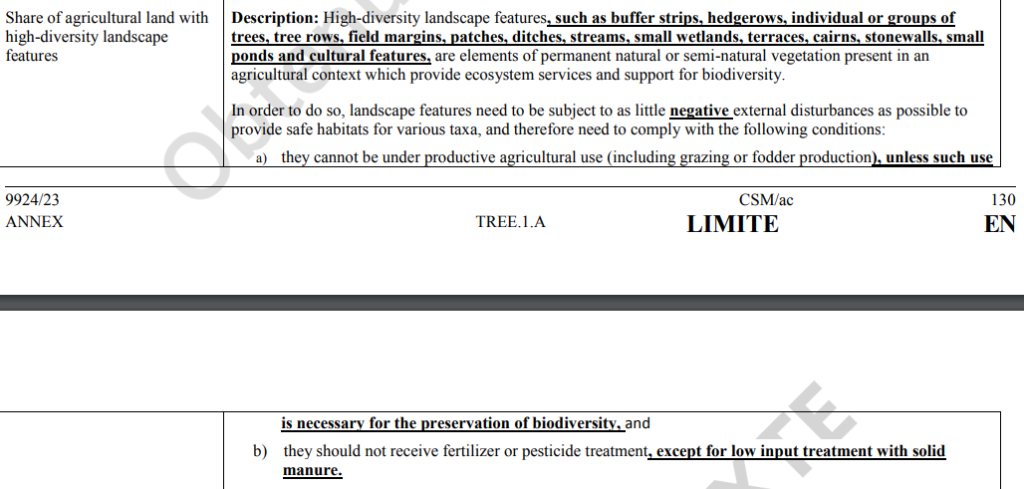
What’s in bold and underlined above is what’s newly added by the Council to the Commission text. So this is what the National Ministers want – and traditionally the Council of Ministers is the most powerful of the EU Institutions. As both the Council and the Parliament texts are already weakening the ecological dimension to these areas – worry not wavering MEPs! The final NRL as agreed by co-legislators will certainly weaken the nature-only dimension to these areas: some level of productive activities will clearly be allowed in these areas incorrectly called ‘abandoned’.
While many concerned about the basic functioning of biodiversity – aka the survival of the living world – will see this as a regressive step backwards, that’s the nature (so to speak) of compromise at the level of EU legislation. It’s this or nothing. Here’s why:
If the vote on Thursday opts to reject the NRL, the whole text and these compromises will be abandoned. The alternative – as pushed by opponents of the NRL – is for nothing to happen for now. Its for the potential of some new text to possibly be developed by the next Commission, after the next elections. Its to have wasted the last few weeks, months and years of work on this file. There is no time in the current legislative term (mandate) for this Commission to start again. That – that – is the best opponents of the NRL can come up with.
So that’s the choice we face – salvage something meaningful, see compromise upon compromise to acquiesce to a misguided productivity narrative – or nothing at all. And the vote on Thursday between these two choices will be razor tight. That’s where we are right now.
Abandon the Scare-Mongering, Embrace the Living World.
Whatever else they are, high diversity landscape features, areas for the living world to recuperate and to regenerate, and to play a role as ‘providers of ecosystem services ‘ – to use that language for a moment – are not ‘abandoned’. Already, it is hard to farm what is sometimes called the hare’s corner – literally an area in the corner of a field where a tractor turn doesn’t encroach. And this is what needs to be slightly expanded, to help us avoid catastrophic biodiversity collapse. These biodiversity features include hedgerows, ponds, small woods, traditional orchards and strategic tree planting, traditional stone walls, field margins in arable systems and similar.
These areas are places for biodiversity to replenish. With farmland covering so much of the land base of Europe, creating some space-for-nature to come back will be vital for the basic functioning of our increasingly stressed living world. Farmland birds, to take one measure, are disproportionately under pressure, with over half the population gone since 1980 – a much steeper decline than for all other categories.
Included in this living world are pollinators, which a significant number of our crops use or rely on. This interface role pollinators play shows just how much we rely on nature, and on nature and our practices being in harmony. So space-for-nature – however big or small – is not productive farmland ‘abandoned’. It’s a functioning ecosystem with working agri-ecosystem services.
Abandoning Policies on Nature does not help with Productivity.
What happened last time? There is recent precedent for getting rid of nature-orientated agricultural requirements due to ‘food security’ and the impact of war in Ukraine. The data is in, and it turns out there was a 40% reduction in the biggest supposedly compulsory ecological activity of CAP – ecological focus areas – and hardly any extra food for people. Almost no wheat for humans was grown, but animal feed and other not-for-human-consumption crops were grown. It has been calculated as about the equivalent of a single slice of bread for the year in the case of Austria, in the study we quote from below.
Indeed in the case of Austria, where more information was available, the situation was even starker for ecological loss than the average: “only 0.6 % (!) of the land under derogation was used for producing grain for food, despite the “lack of grain for food aid worldwide” that Austria’s Minister of Agriculture had used as an argument to demand the greening derogations. The loss of 56 % of ecological focus areas (about 12,000 hectares) compared to the previous year were the result. The largest declines were in catch crops (down 84 %), nitrogen-fixing crops (down 48 %) and areas for the protection of bees and other pollinating insects (also down 48 %). These serious losses are to the detriment of soil quality and biodiversity, and thus to the detriment of two essential pillars of agricultural productivity.”
Full details in this article:
CAP Environmental Derogations: What is the Impact on Food Security?
Then as now, food security was weaponised. The forces of business -as-usual – politicians and lobbyists – used a disaster capitalism logic to further compromise the living world.
NEW – thread on the Council general position
Context
Weaponising food security fears in times of war is both a powerful and a reprehensible way to scare people and stymie change. This tactic is designed to frighten people out embracing the changes we so desperately need in how we manage our land and try to feed people, while concurrently creating a veneer of responsibility and integrity. Very few people would vote for wanton ecological destruction as a thing in itself – so the opponents of the NRL instead create a plausible sounding ‘if only’ type of situation. Now is not the time….we love nature but this isn’t’ the way…if only it wasn’t for x, y,or z
This growing food security narrative is pushed by players who have always, and consistently, argued against change anyway. And now, we are supposed to believe that this time, somehow, things are different – things are too serious for these pesky little efforts at sustainability. There’s a war going on after all! Despite actual trade surpluses and crop gluts from Ukraine causing havoc in east European countries in particular, we are asked to press pause on all efforts at change. Moreover, we are asked to reverse what little progress is made.
Except, that is, food system and dietary change – no change is up for consideration encouraged in this domain, as we have doubled down on animal feed and biofuels, while being asked to ignore how unsustainable and often destructive current agri-food methods are. Resource-use and prioritisation, the externalisation of pollution, climate and biodiversity collapse, rural de-population, global trade disparities and a host of other social and environmental catastrophes.
So having successfully and destructively instrumentalised the war to erode 40% of the single most important environmental underpinning in CAP – the supposedly compulsory GAECs (Good Agricultural and Environmental Conditions), for almost no food security gain, the latest attempt to stymie change comes in the form of a tall-tale about land abandonment.
Abandoning 10% of Europe’s productive land during a war would of course be serious if it was true. If we had a perfectly sustainable food system and we suddenly lost 10% of land doing very sustainable farming – that would be a disaster. But we have neither this sort of agri-food system, nor the reality of a loss of 10% of productive land via the NRL.
Concurrently to this week’s debate and vote, we need to amplify an honest conversation about the collapse of the living world, about the use of what resources we have left and their impact, about the role land used primarily for farming play, and, most of all, about our wider agri-food system.
Conclusion
All of this said, the week ahead is the week ahead. 45 MEPs must be convinced that the Nature Restoration Law needs to at least progress to plenary. Ostensibly, this is not a big ask: its just an ask for democracy to properly, fully unfold. Its an ask for the full parliament to have its say – not just committees. Mostly, its Renew MEPs and independents who are yet to adopt a position. All MEPs on the ENVI committee can be found here (or downloaded here: Committee Members ENVI).
The end point of this process will either be Thursday, and derailment – a real abandonment; a lost vote at plenary should it get past Thursday; or it will result in a weakened Nature Restoration Law. But even th latter option would give the living world a fighting chance.
More
Nature Restoration Law News – Environment Committee Edging Towards Deal as EPP walks out
How will Environment Committee vote on Nature Restoration Law?
Agri MEPs Vote to Reject the Nature Restoration Law – what’s next?
Nature Restoration Law | Agri Committee’s Amendments Revealed – Reduced Targets, Increase Exemptions





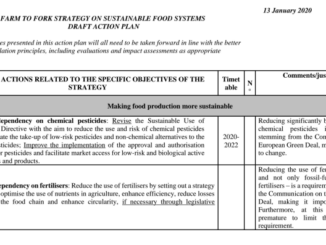
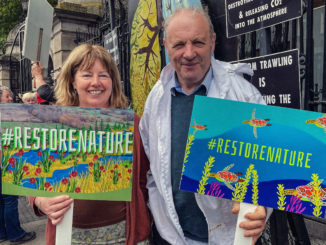
1 Trackback / Pingback
Comments are closed.